Located in the south western reaches of the African continent, Namibia boasts a well-developed infrastructure, some of the best tourist facilities in Africa and an impressive list of breathtaking natural wonders.
Visitors can explore the capital of Windhoek and discover the lovely coastal town of Swakopmund, boasting remnants of the country’s German influence reflected in the architecture, culture, cuisine and the annual Oktoberfest celebrations. But to properly appreciate this extraordinary country, guests need to venture out of these two towns to explore the remarkable natural landscapes Namibia has to offer. These include the impressive Fish River Canyon, the world's second largest canyon, the vast Etosha National Park teeming with abundant wildlife, the hauntingly beautiful Kalahari Desert and of course the Namib Desert, the oldest desert in the world, stretching for over 2000 km along the Atlantic Coast.
Namibia is undoubtedly an ideal destination for travellers seeking an unforgettable African experience in a uniquely beautiful and untamed wilderness. (ITT)

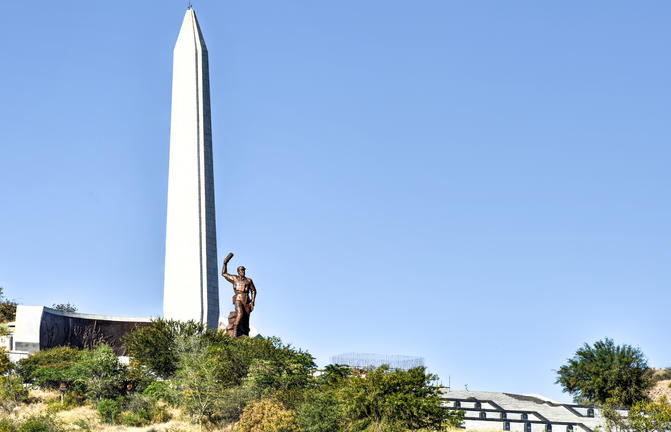
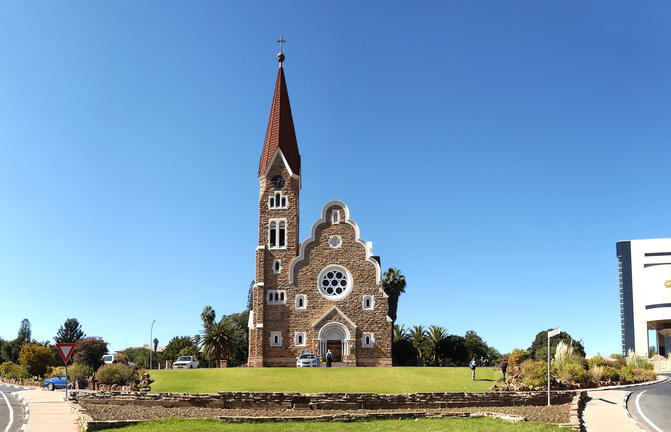
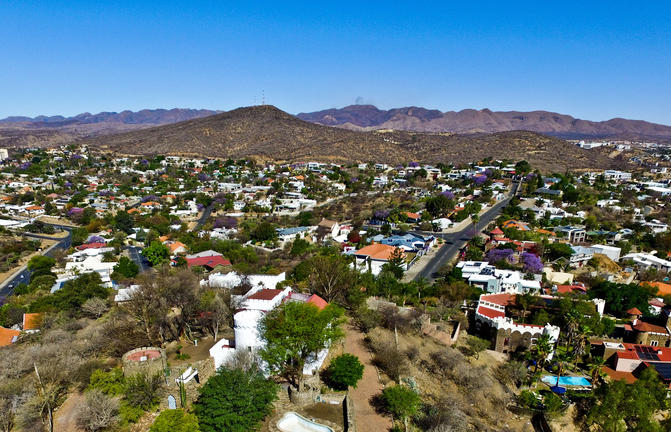
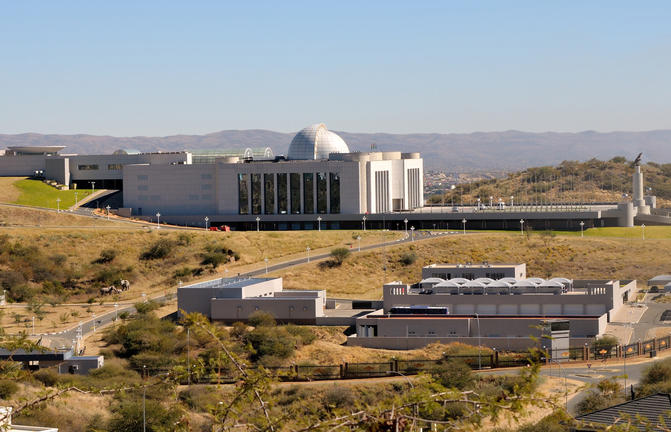
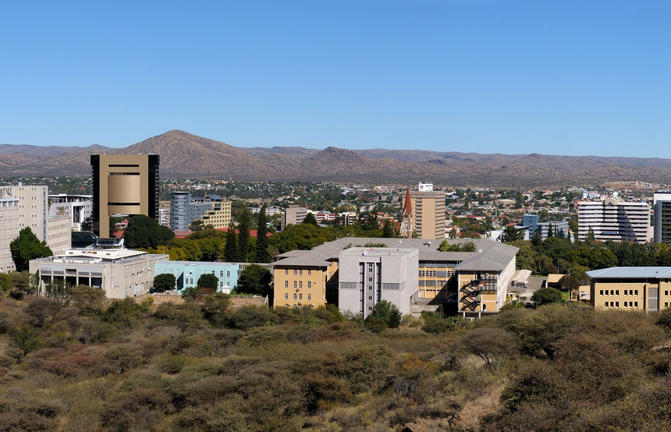
Situated in Central Namibia, the cosmopolitan city of Windhoek serves as the capital of the country. It is home to an international airport and a plethora of restaurants, shops, entertainment venues and accommodation options. The city is clean, safe and well-organised, with a colonial legacy that is reflected in its many German eateries and shops, and the widespread use of the German language. Windhoek has an interesting mix of historical architecture and modern buildings, many of which are worth a look, including the Alte Feste an old fort, the 1896 Christuskirche Christ Church, and the more contemporary Supreme Court.
As there is no accommodation at Sossusvlei, visitors to this desert wilderness are likely to end up staying at Sesriem, 65 kilometres away, where camps and lodges serve as a base from which to explore the dunes. Sesriem Canyon, a deep chasm carved through the rocks by water, is a striking natural feature of the area that is best explored on foot. Stony walls rise up sharply on both sides of the canyon, while birds roost in its crags and lizards dart along the ledges. The canyon’s name was coined when early settlers used it as a water source, using six lengths of leather (‘ses riem – six thongs) tied together to lower buckets into the water at the base of canyon.)
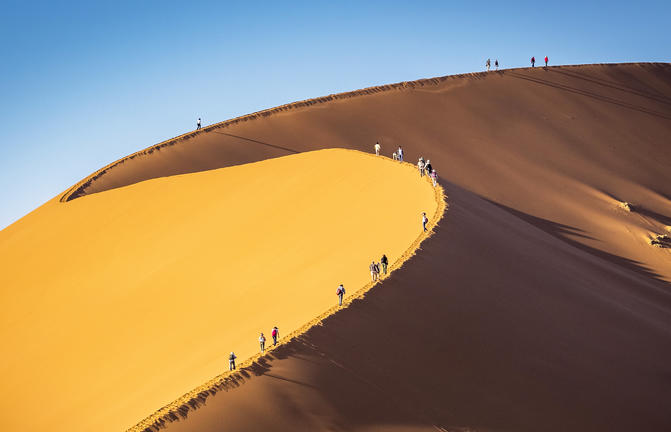
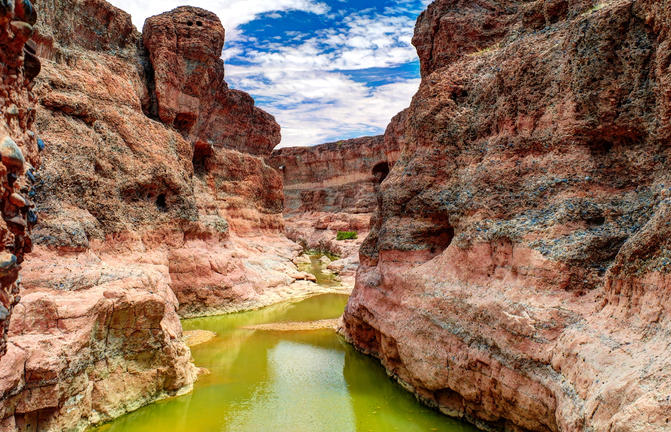
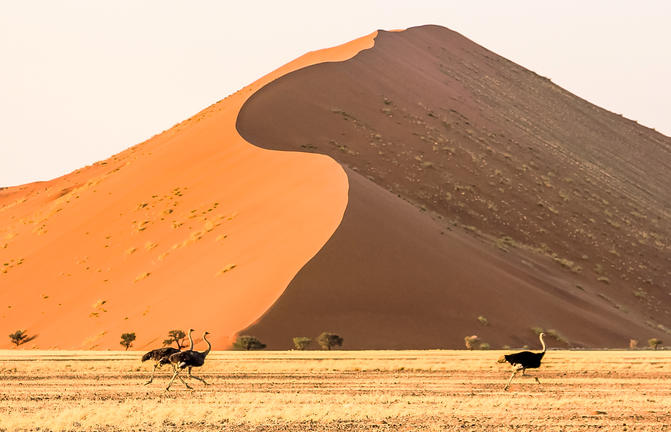
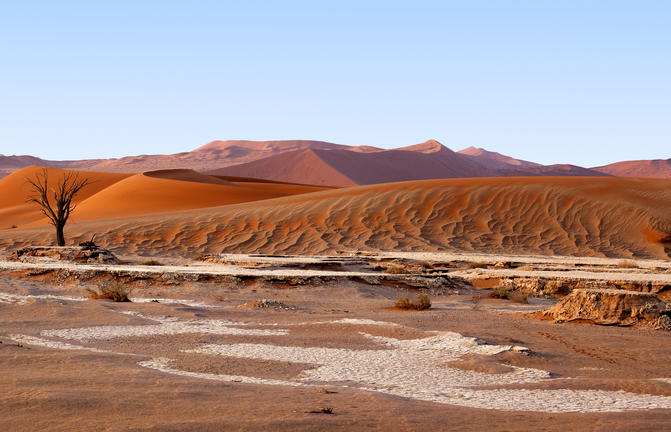
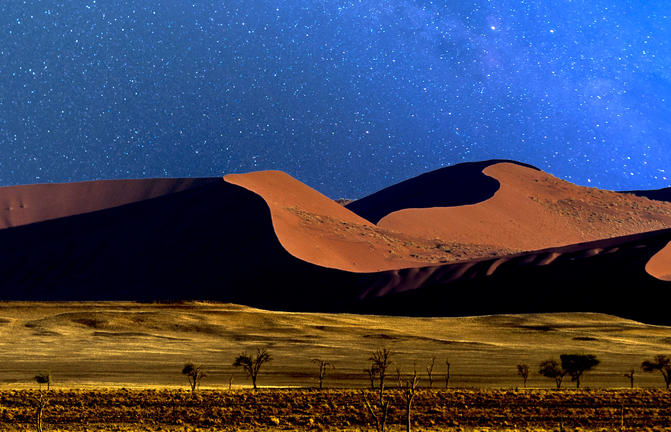
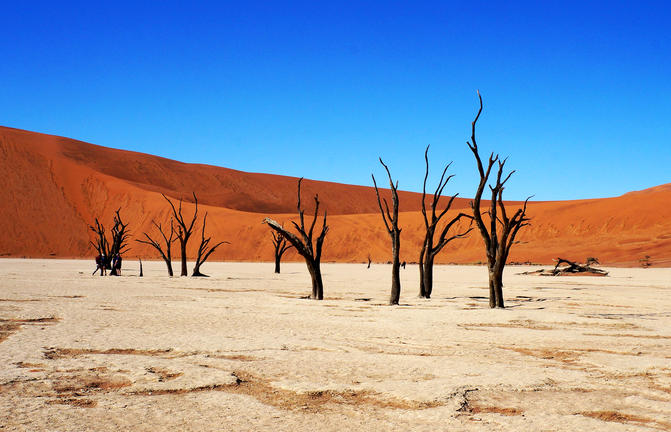

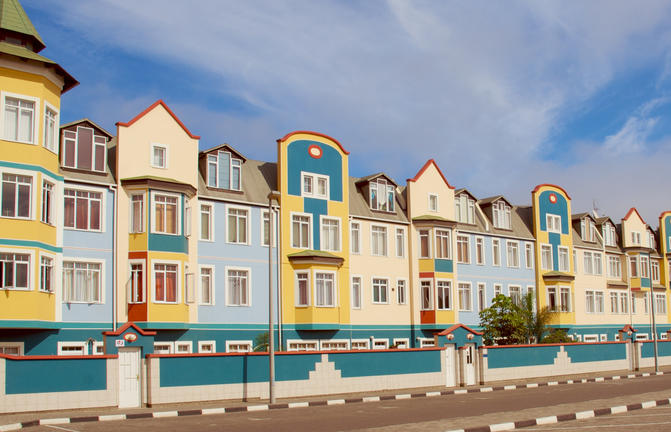
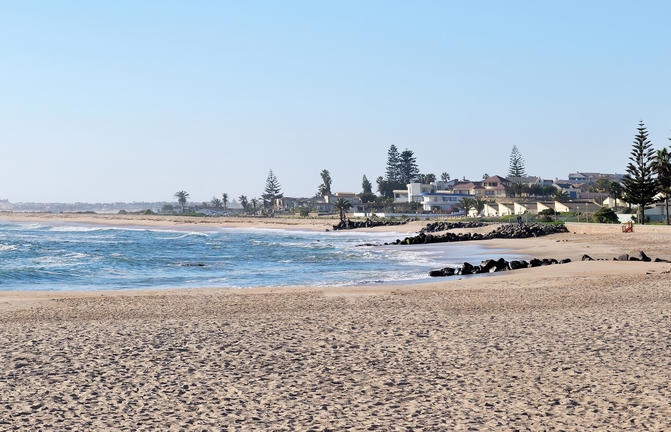
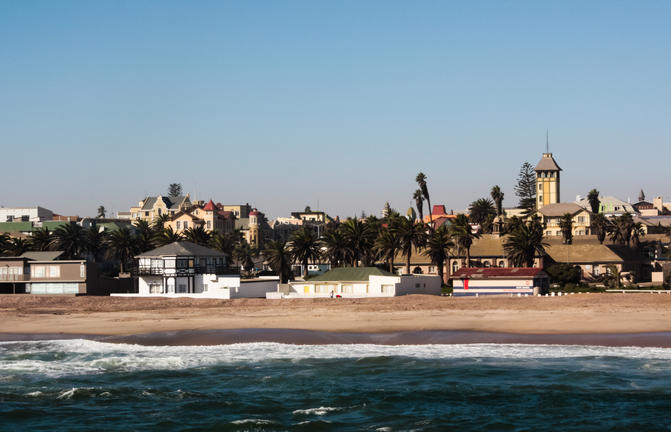
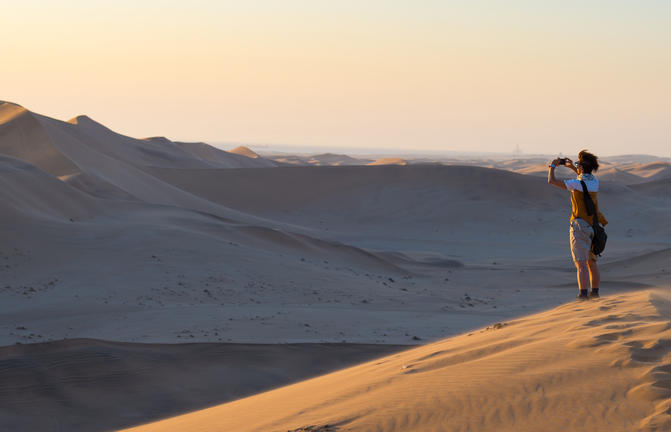
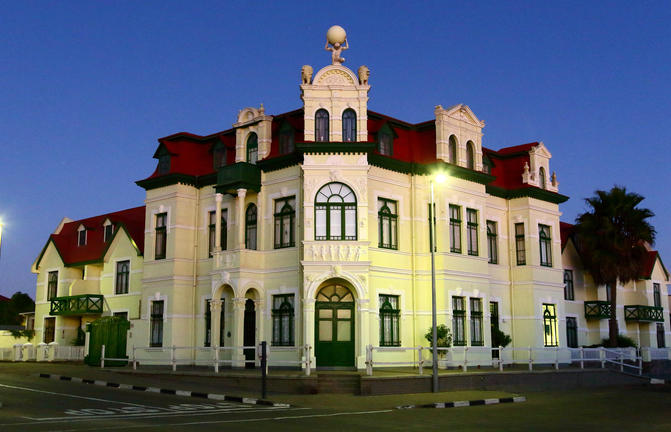
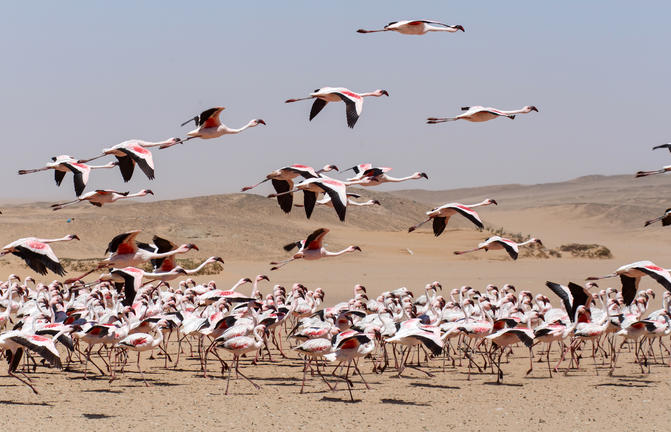
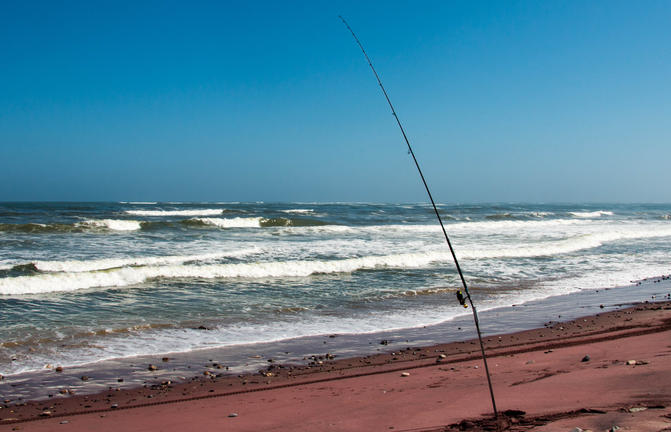
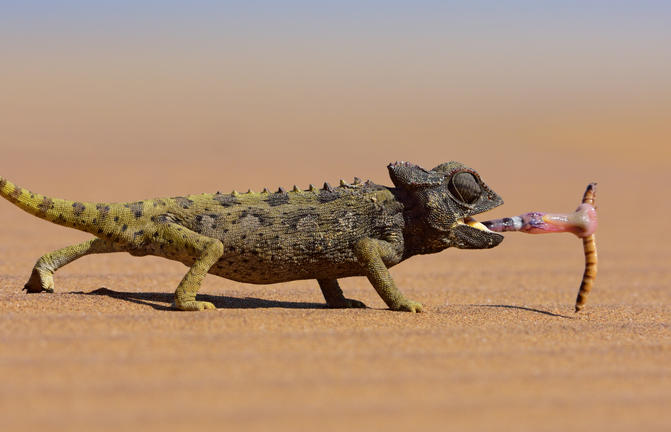
Set along Namibia's coast on the Atlantic Ocean and surrounded by desert, the seaside town of Swakopmund is known for its wide avenues and beautiful colonial architecture.
Founded in 1892 as the main harbour for German South West Africa, Swakopmund is often described as being more German than Germany. Now a town with a distinctively resort character with plenty to keep its visitors busy, Swakopmund is the capital of the Skeleton Coast tourism area. The quirky mix of German and Namibian influences, adventure options and laid back atmosphere make it a popular Namibian destination. Visitors can look forward to a number of activities including quad biking, horse riding, paragliding, fishing, sightseeing, excursions to Sandwich Harbour or the seal colony at Cape Cross, scenic flights and fascinating desert tours. (ITT)
Situated in Namibia’s desolate, awe-inspiring Namib Desert, between Usakos and Swakopmund and about two hours’ drive from Swakopmund, the Spitzkoppe are a group of bald granite peaks forming one of Namibia’s most recognizable and dramatic landmarks. These enormous towering domes are a mecca for hikers and mountaineers, from beginners interested in guided historic walks to professional climbers seeking an adrenaline boost. Numerous ancient rock paintings can be visited as part of a guided walking tour. The extreme, barren landscapes and striking rock formations create an excellent setting for photography.






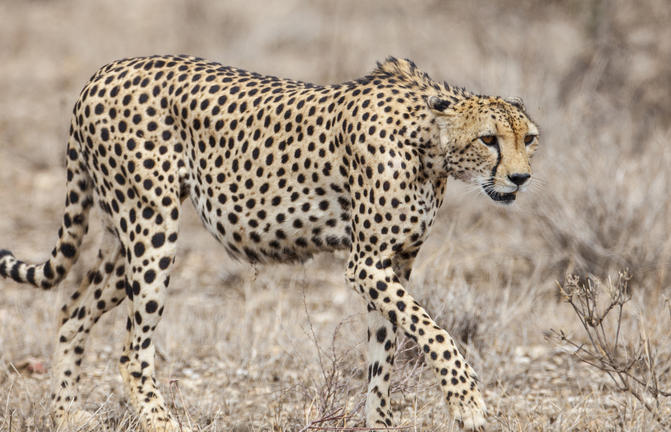
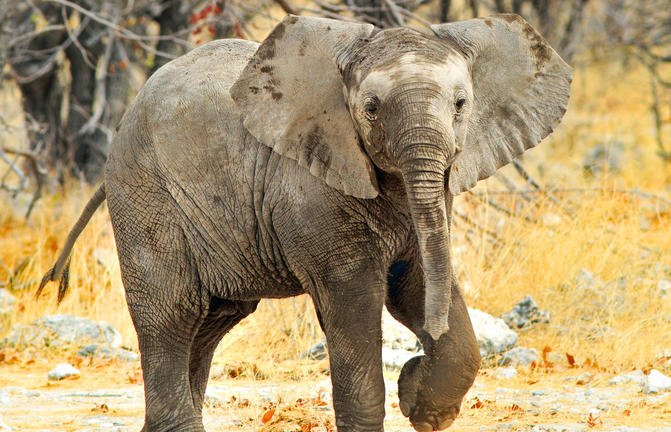
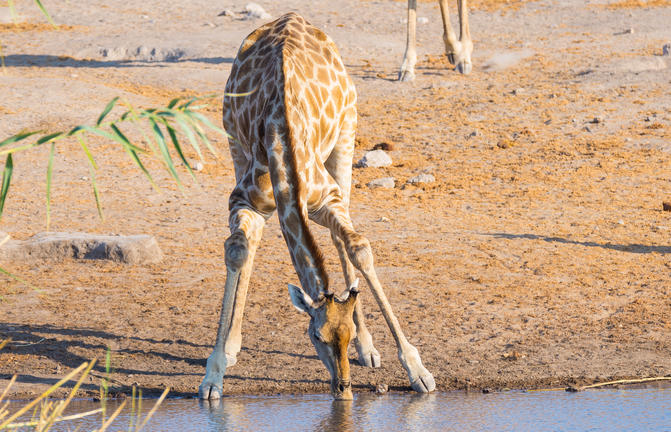
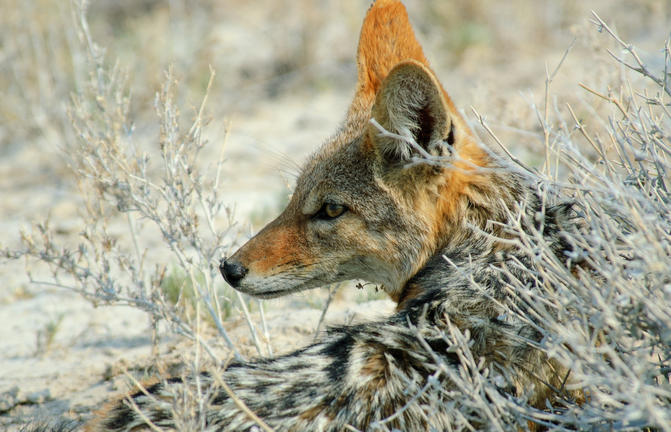
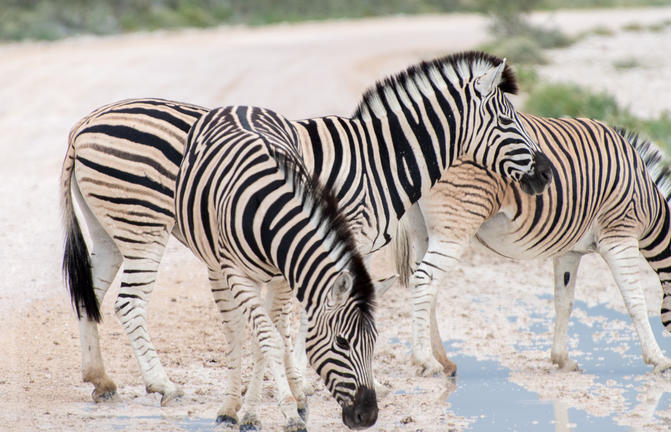
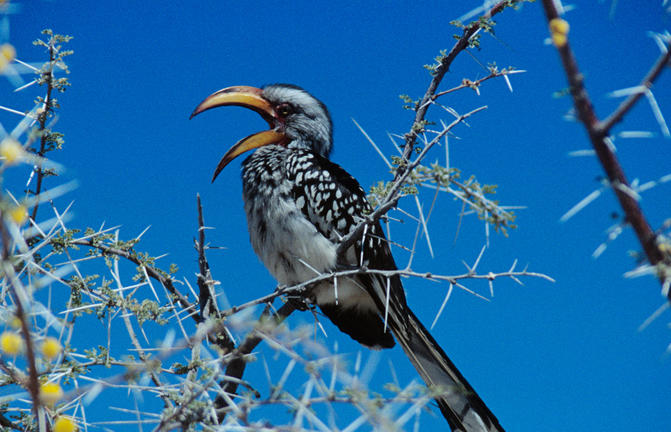
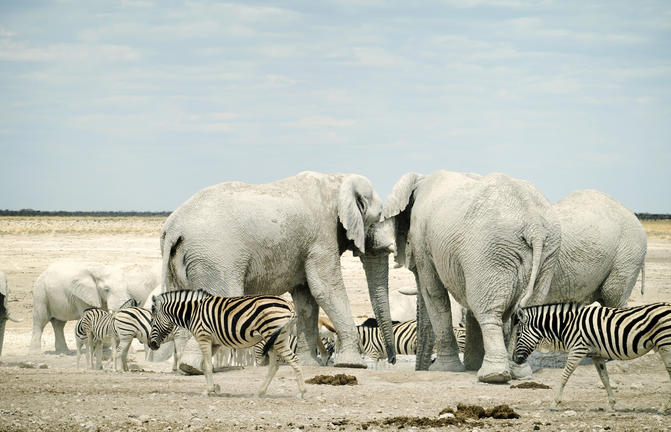
Etosha South is located just south of the world famous Etosha National Park in northwestern Namibia. Several private game reserves share a boundary with Etosha National Park, others are a bit further away towards Outjo. The access for all guests to Etosha, be it on a guided safari or in their own vehicle, is via the southern entrance at Andersson’s Gate.
Etosha is home to a great variety of wildlife including lion, giraffe, elephant, white and black rhino, giraffe, zebra, springbuck and a multitude of plains game. Popular activities include guided or unguided game drives, tracking rhinos on foot with a game ranger, guided nature walks, or simply watching the sun set over this magnificent landscape.
Located in Northwestern Namibia, Etosha East is a protected sanctuary in the eastern part of the world-renowned Etosha National Park, known as one of the most accessible game reserves in Southern Africa. Etosha East boasts vast open plains scattered with semi-arid savannah grasslands dotted with watering holes and secluded bush camps.
An impressive 5000-square-kilometre salt pan makes up a large area of the eastern side of the Etosha National Park and can even be seen from space. This remote area teems with abundant wildlife such as lions, elephants, black rhinos and giraffes, as well as a variety of birdlife featuring flamingos, ostriches, eagles, hornbills, and owls.
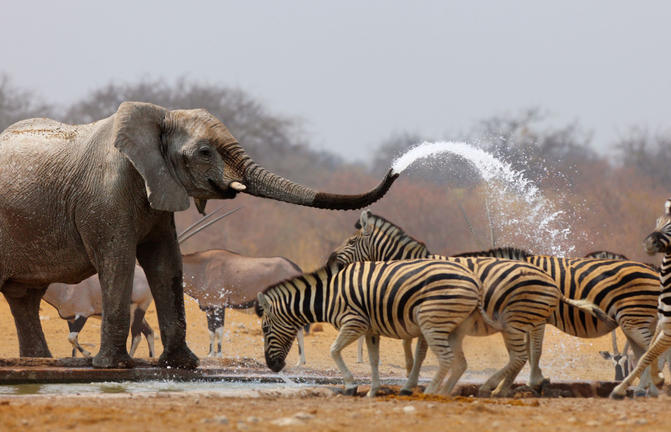
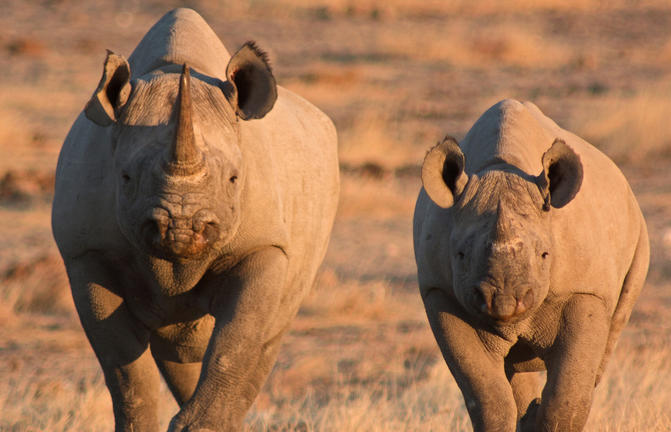
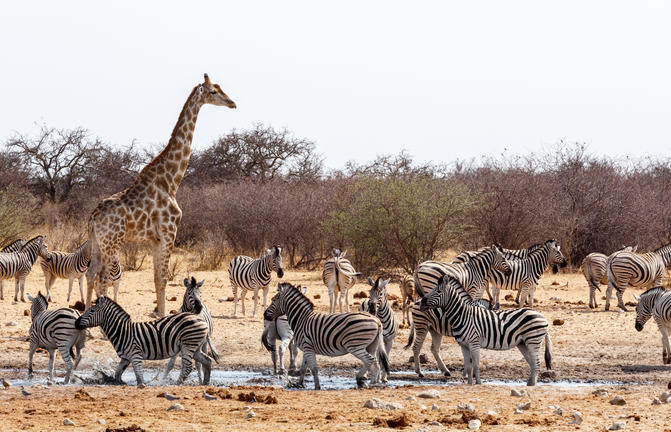
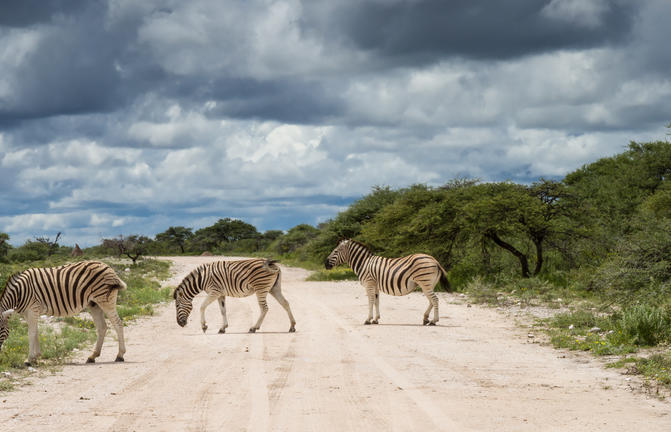
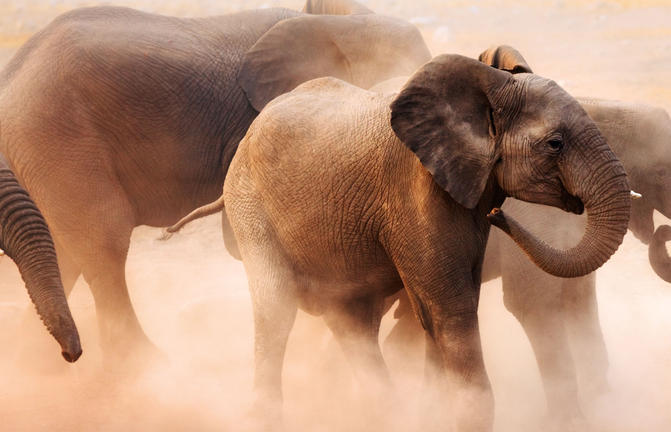
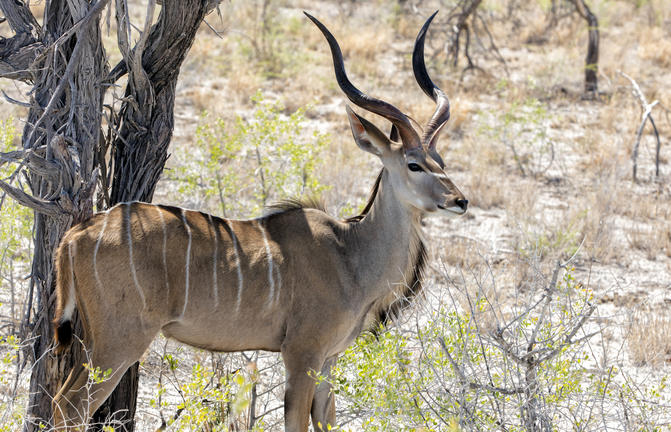





The Kavango region lies in northeastern Namibia and includes the western part of the Caprivi Strip to the northeast. The region is largely separated from Angola by the magnificent Kavango River, which dominates the area and is essential to the local Kavango people’s survival. This magnificent river and the surrounding thickly wooded savannah provides a striking contrast with the other more arid areas of Namibia. Bordering the Kavango River is the Mahango Game Reserve. Visitors can look forward to exploring this impressive reserve, featuring riverine forests, broad floodplains, and majestic baobab trees. This pristine natural environment forms an ideal habited for an astonising array of wildlife including large herds of elephant, a number of rare game species, and over four hundred species of bird.
Situated in the southern reaches of Africa, Botswana is renowned for its pristine wilderness areas characterised by deep lagoons, wetlands, lush palms, rugged hills and desert plains scattered with scrubland.
The country’s primary tourist drawcard is undoubtedly the vast red expanse of the Kalahari Desert and its remarkably beautiful Okavango Delta, the largest inland delta in the world. These natural wonders provide a tranquil haven for an abundance of African wildlife to thrive.
Other highlights include the impressive Makgadikgadi Salt Pans, where visitors are privy to massive zebra migrations during the flood season; the Savuti plains, which host large prides of lions; and the Tsodilo Hills, where 4500 rock paintings form a unique record of human settlement over many millennia. (ITT)
The Mapula and Sekwana Concession, also known as NG12 (an acronym for the broader Ngamiland) is situated north of the breathtaking Okavango Delta, spreading out over 220,000 acres, and is accessible via a 45-minute light aircraft trip from Maun. This Community Concession boasts magnificent delta landscapes, as well as mopane woodlands. In the southern part of the park, visitors will be able to see prolific birdlife (African paradise flycatcher, Carmine bee-eaters, and the endangered wattled crane) as well as giraffes, elephants, buffaloes, lions, wild dogs, and numerous antelope species. A range of guided tours and game drives are on offer. Several villages are encompassed by the concession, and the local communities work in conjunction with NG12 management to sustain the beautiful natural area.
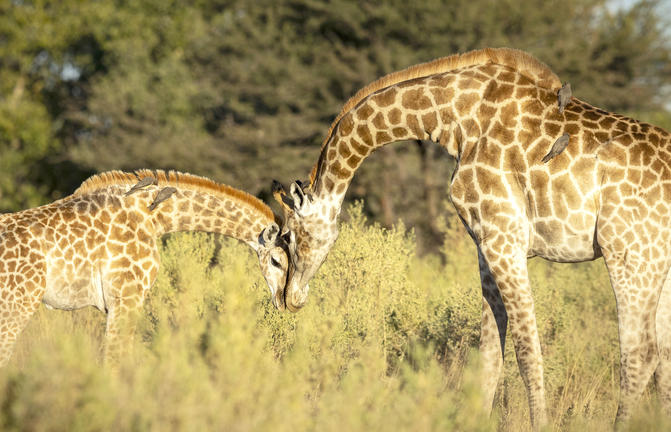
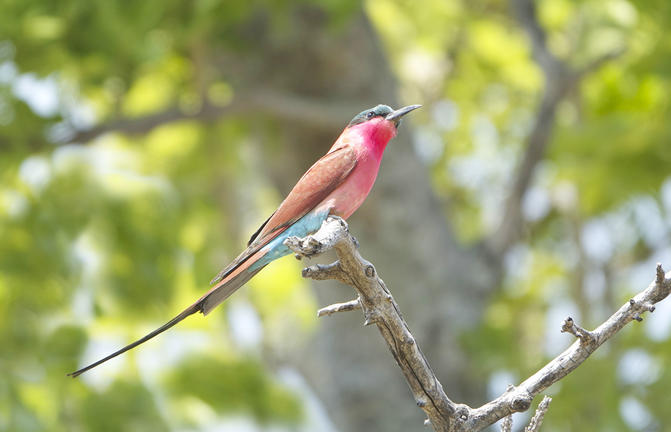
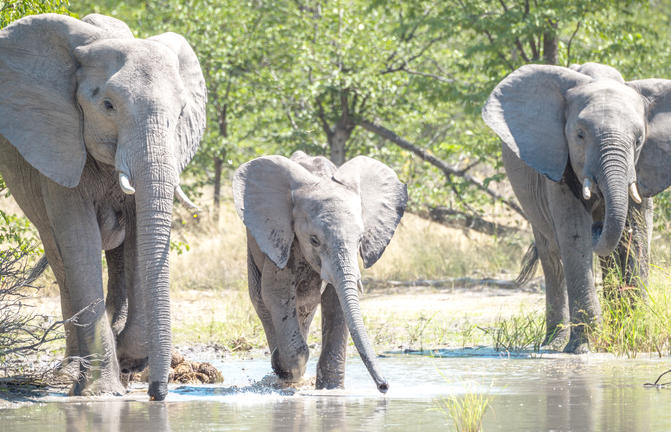
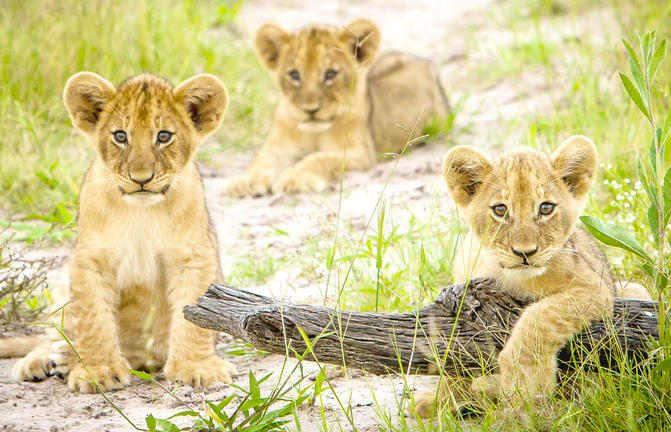
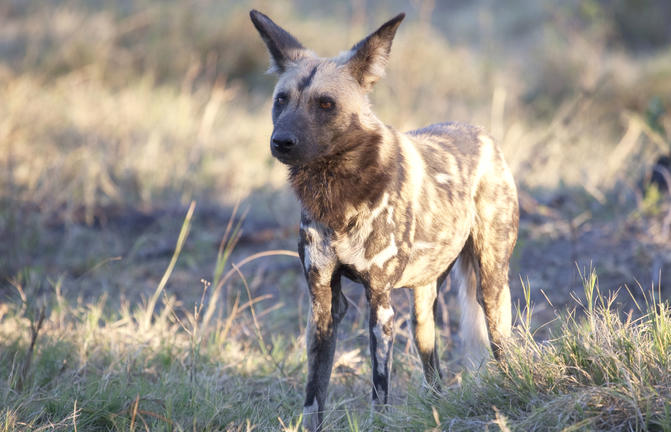
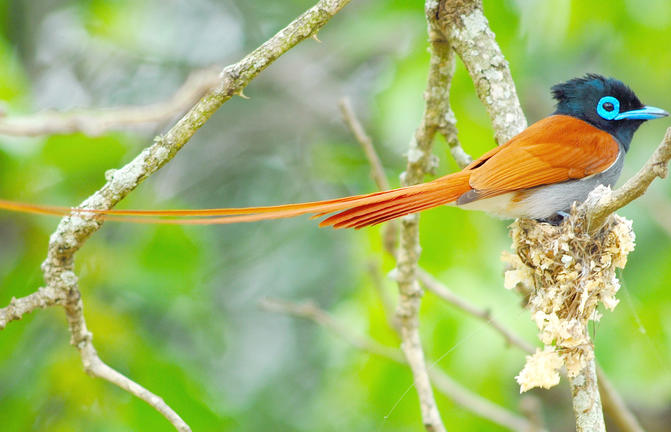
Located in the south western reaches of the African continent, Namibia boasts a well-developed infrastructure, some of the best tourist facilities in Africa and an impressive list of breathtaking natural wonders.
Visitors can explore the capital of Windhoek and discover the lovely coastal town of Swakopmund, boasting remnants of the country’s German influence reflected in the architecture, culture, cuisine and the annual Oktoberfest celebrations. But to properly appreciate this extraordinary country, guests need to venture out of these two towns to explore the remarkable natural landscapes Namibia has to offer. These include the impressive Fish River Canyon, the world's second largest canyon, the vast Etosha National Park teeming with abundant wildlife, the hauntingly beautiful Kalahari Desert and of course the Namib Desert, the oldest desert in the world, stretching for over 2000 km along the Atlantic Coast.
Namibia is undoubtedly an ideal destination for travellers seeking an unforgettable African experience in a uniquely beautiful and untamed wilderness. (ITT)






Stretching over 6200 square kilometres in northeast Namibia, the Bwabwata National Park includes the Caprivi Game Park and the Mahango Game Reserve which extends along the narrow Caprivi strip. The park functions as a wildlife sanctuary and practices community-engaged conservation, which visitors can take part in. It has been dubbed the 'People's Park', as the local Caprivian people live in harmony with the land and the animals. With an ever-growing wildlife population, the park is home to many animals including elephant, leopard, lion, buffalo, wildebeest, crocodile, and red lechwe. Avid birdwatchers will be thrilled to find over 330 bird species in the area. Visitors can look forward to excellent game viewing, boat safaris, nature walks and camping under the brilliantly clear Namibian night sky.
Situated in the southern reaches of Africa, Botswana is renowned for its pristine wilderness areas characterised by deep lagoons, wetlands, lush palms, rugged hills and desert plains scattered with scrubland.
The country’s primary tourist drawcard is undoubtedly the vast red expanse of the Kalahari Desert and its remarkably beautiful Okavango Delta, the largest inland delta in the world. These natural wonders provide a tranquil haven for an abundance of African wildlife to thrive.
Other highlights include the impressive Makgadikgadi Salt Pans, where visitors are privy to massive zebra migrations during the flood season; the Savuti plains, which host large prides of lions; and the Tsodilo Hills, where 4500 rock paintings form a unique record of human settlement over many millennia. (ITT)
Tucked away in the northeastern corner of Botswana, on the banks of the famous Chobe River, the scenic little town of Kasane rests on the doorstep of the spectacular Chobe National Park. There are no boundary fences separating the village from the park and game such as elephant and hippo are often spotted roaming around the town. If on the lookout for elusive game, pay a visit to the Sedudu Valley Road, where large dead trees provide temporary homes for leopards. Within Kasane, an ancient baobab tree stands on display, once serving as a local prison. Visitors can look forward to a multitude of activities including: enjoying a game drive through the park, taking a sunset cruise down the Chobe River, visiting a local village or jumping on a day trip to the breathtaking Victoria Falls.




A nation of spectacular natural beauty, friendly people and rich culture, Zimbabwe’s status as one of Africa’s leading safari destinations was dampened for years by its political instability. But now that the country is transcending its strife and returning to a state of equilibrium, it is once again emerging as a vacation highlight of the continent.
Victoria Falls – known to locals as ‘The Smoke That Thunders’ – is one of the seven natural wonders of the world and the sheer power of this massive body of water plunging into the Zambezi Gorge is awe-inspiring and unforgettable. Lake Kariba, with its game-rich shores and islands, is an idyllic safari spot featuring mind-blowing sunsets; Hwange National Park is known for its huge herds of elephants; and a kayak trip down the Zambezi through the Mana Pools National Park will appeal to the intrepid traveller, providing close encounters with crocodiles, hippos and a host of other wildlife. (ITT)

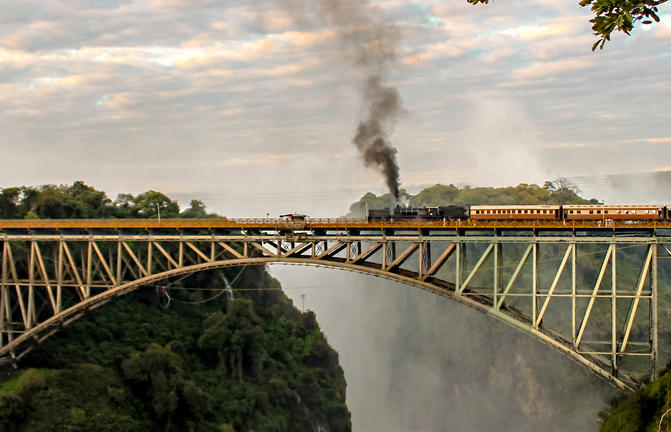

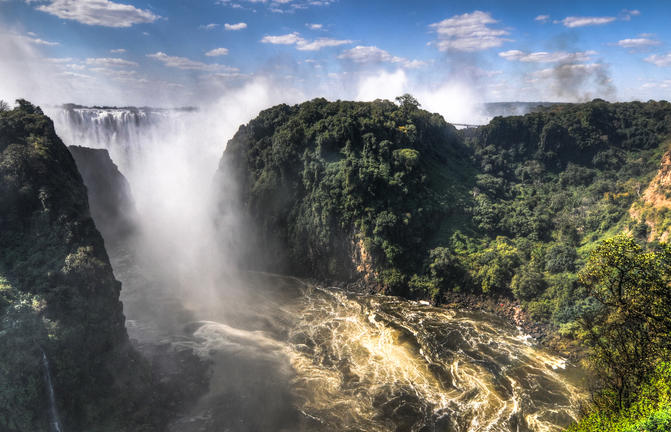



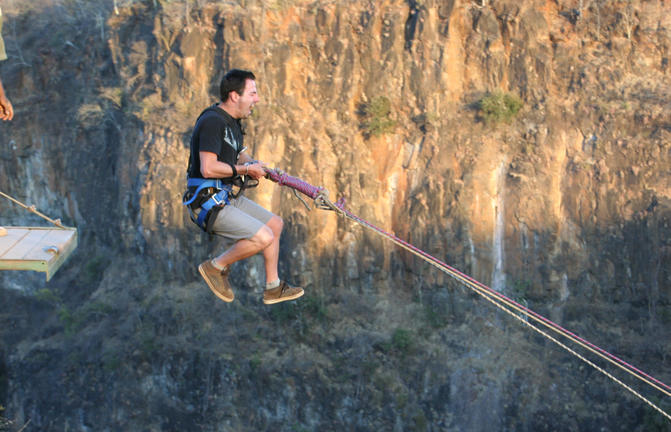
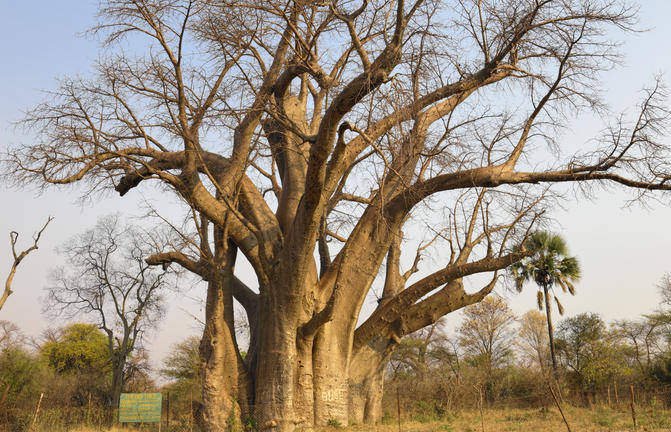

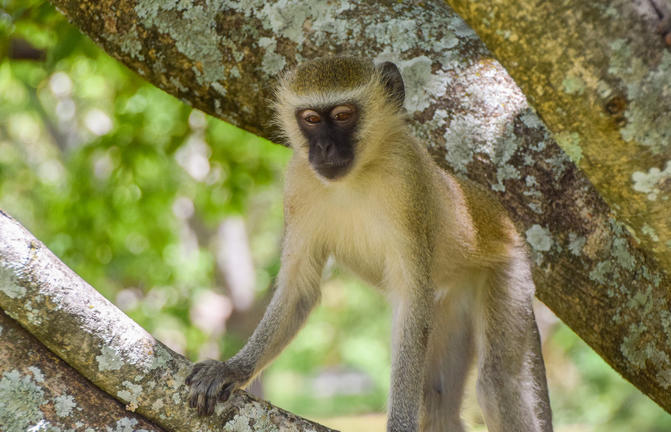

Resting on the southern banks of the Zambezi River at the western end of the eponymous falls, this popular tourist town is compact enough to walk around and makes an ideal base for travellers exploring the Seventh Wonder of the World, the unfathomably vast Victoria Falls.
About two thirds of the Falls can be viewed from the Zimbabwean side and, whilst the falls are undoubtedly the star attraction, the area provides both adventure seekers and sightseers with plenty of opportunities to warrant a longer stay. Popular activities include scenic flights over the falls in helicopters or micro lights, bungee jumping off the Victoria Falls Bridge, white-water rafting (seasonal), and day trips to Chobe National Park in neighbouring Botswana. The town itself offers some excellent accommodation and restaurant options as well as a variety of African curios and authentic art sold by friendly Zimbabwean locals who are very welcoming and eager to help you enjoy your stay. (ITT)

